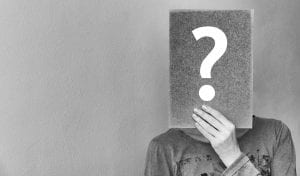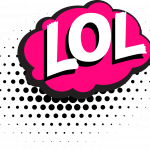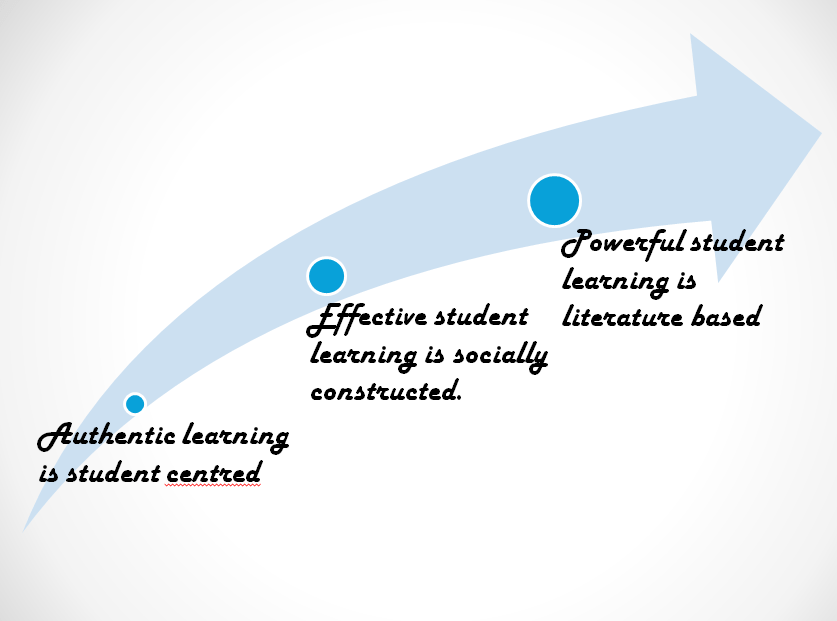For a very long time
I was convinced that
literary learning
meant
learning how to read.
BOY was I WRONG!
This is my journey to enlightenment.

geralt / Pixabay – Enlightened at last…
I wrote Once upon a time before this session even started. I find it interesting to reflect on my journey and see how my understanding has evolved since then.
What did I learn?

Anemone123 / Pixabay
I learned that:
- Stories are more than just tall tales, they are humanity’s way of imparting information, values and language (Macdonald, 2013, p.2).
- Our ability to understand language is intrinsically linked to our own literacy identity (Anstey & Bull, 2006).
- Literature’s greatest value is from the discussion that it stimulates (Allington & Gabriel, 2012).
- Student learning outcomes are around a shared reading experience (Fisher & Frey, 2018).
- Genre variety is important as it increases discourse and efficacy in understanding nuances within literature (Tobin, 2012).
-
Afterall, how can we expect students to understand the differences between memoirs and biographies, expository texts to essays or picture books and graphic novels if they are not exposed to them?
-
- We need to equip our students with the skills and strategies for navigating and analysing hypertext and multimodal literature in our classroom practice (Rowberry, 2018). Their ability to be active citizens in the 21st century depends on those decoding and analysis skills to utilise literature in all its formats – digital, audio, graphic novel, and picture books.
So what does this mean for my understanding of Literary learning?
Literary learning (as I discovered after wading through

StevenGiacomelli / Pixabay
module readings, packets of choccie biscuits and journal articles) is the pedagogical practice of using literature in a social context to teach the curriculum (Derewianka, 2015).
It requires:
- Good quality literature with strong curriculum links in a variety of genres and formats (Derewianka, 2015)
- Age appropriate reader response strategies:
- Book Bentos,
- Book Trailers
- Literature circles
- Story mapping
- Word clouds
(Derouet, 2020)

OpenClipart-Vectors / Pixabay
I did not know which ones to do…
so I asked for help (and I wrote a gazillion blog posts. Check them out!)
- Murphy (2020) pointed out that literature circles are ideally suited to the history curriculum in his forum post.
- Thurling (2020) argued that the social aspect of literature circles is often undervalued.
- Armstrong (2020) suggested that book trailers suit visual learners and embeds technology effectively into learning in her blog.
- My work colleague advised that teachers could incorporate both strategies together as part of a guided inquiry unit.
I realised that it was all correct!
- Students participate in a Literature circle to analyse the text,
- And then use that analysis to make a book trailer (or another creative piece), to show their understanding of the topic whilst using technology. WINNING!
Now that I have had my revelation about the value of discourse…… I wonder, what does that mean for my role as a teacher librarian? It is clearly obvious that my role is no longer just the promotion of reading, and but has now morphed into the advocacy of literature in classroom practice to promote READING to LEARN !
This means I need to:
Why?
After all, you cannot have literacy without literature. Its just ‘racy otherwise.
Get it??

stux / Pixabay
References:
Allington, R., & Gabriel, R. (2014). Every child, every day. Educational Leadership, 69 (6). pp.10-15. Retrieved from http://web.a.ebscohost.com.ezproxy.csu.edu.au/ehost/detail/detail?vid=0&sid=af8a4fab-9b19-447e-835f-78f39f145c0b%40sdc-v-sessmgr02&bdata=JnNpdGU9ZWhvc3QtbGl2ZQ%3d%3d#AN=73183256&db=ehh
Anstey, M., & Bull, G. (2006). Teaching and learning multiliteracies: Changing times, changing literacies . Newark, Del.: International Reading Association.
Armstrong, K. (2020). Book Trailers – Promotion tool or pedagogical tool for literary learning. Musing and Meanderings. CSU Thinkspace. Retrieved from https://thinkspace.csu.edu.au/karenjarmstrong/2020/05/12/book-trailers-promotion-tool-or-pedagogical-tool-for-literary-learning/
Derewianka, B. (2015). The contribution of genre theory to literacy education in Australia. In J. Turbill, G. Barton & C. Brock (Eds.), Teaching Writing in Today’s Classrooms: Looking back to looking forward (pp. 69-86). Norwood, Australia: Australian Literary Educators’ Association. Retrieved from https://ro.uow.edu.au/cgi/viewcontent.cgi?article=2620&context=sspapers
Derouet, E. (2020). Assignment 2 Questions : Examples of literature response strategies. ETL402 Discussion Forum. Retrieved from https://interact2.csu.edu.au/webapps/discussionboard/do/message?action=list_messages&course_id=_44234_1&nav=discussion_board_entry&conf_id=_88815_1&forum_id=_181934_1&message_id=_2891282_1
Fisher, D. & Frey, N. (2018). Raise reading volume through access, choice, discussion, and book talks. Reading Teacher, 72(1), 89-97. doi: 10.1002/trtr.1691
McDonald, L. (2013). A literature companion for teachers. Marrickville, NSW: Primary English Teaching Association PETA.
Murphy, D. (2020). Thread 6.3 Literature circles in history. ETL402 Discussion Forum. CSU. Retrieved from https://interact2.csu.edu.au/webapps/discussionboard/do/message?action=list_messages&course_id=_44234_1&nav=discussion_board_entry&conf_id=_88815_1&forum_id=_181940_1&message_id=_2937474_1
Rowberry, S. P., (2018). Continuous, not discrete: The mutual influence of digital and physical literature. Convergence: The International Journal of Research into New Media Technologies. pp.1-11 DOI: 10.1177/1354856518755049
Thurling, D. (2020). RE: 6.3 Literature circles in history. ETL402 Discussion Forum. CSU. Retrieved from https://interact2.csu.edu.au/webapps/discussionboard/do/message?action=list_messages&course_id=_44234_1&nav=discussion_board_entry&conf_id=_88815_1&forum_id=_181940_1&message_id=_2937474_1
Tobin, M. (2012). Digital storytelling: Reinventing literature circles. Fischer College of Education. 12. NSU. Retrieved from https://nsuworks.nova.edu/cgi/viewcontent.cgi?article=1000&context=fse_facarticles


